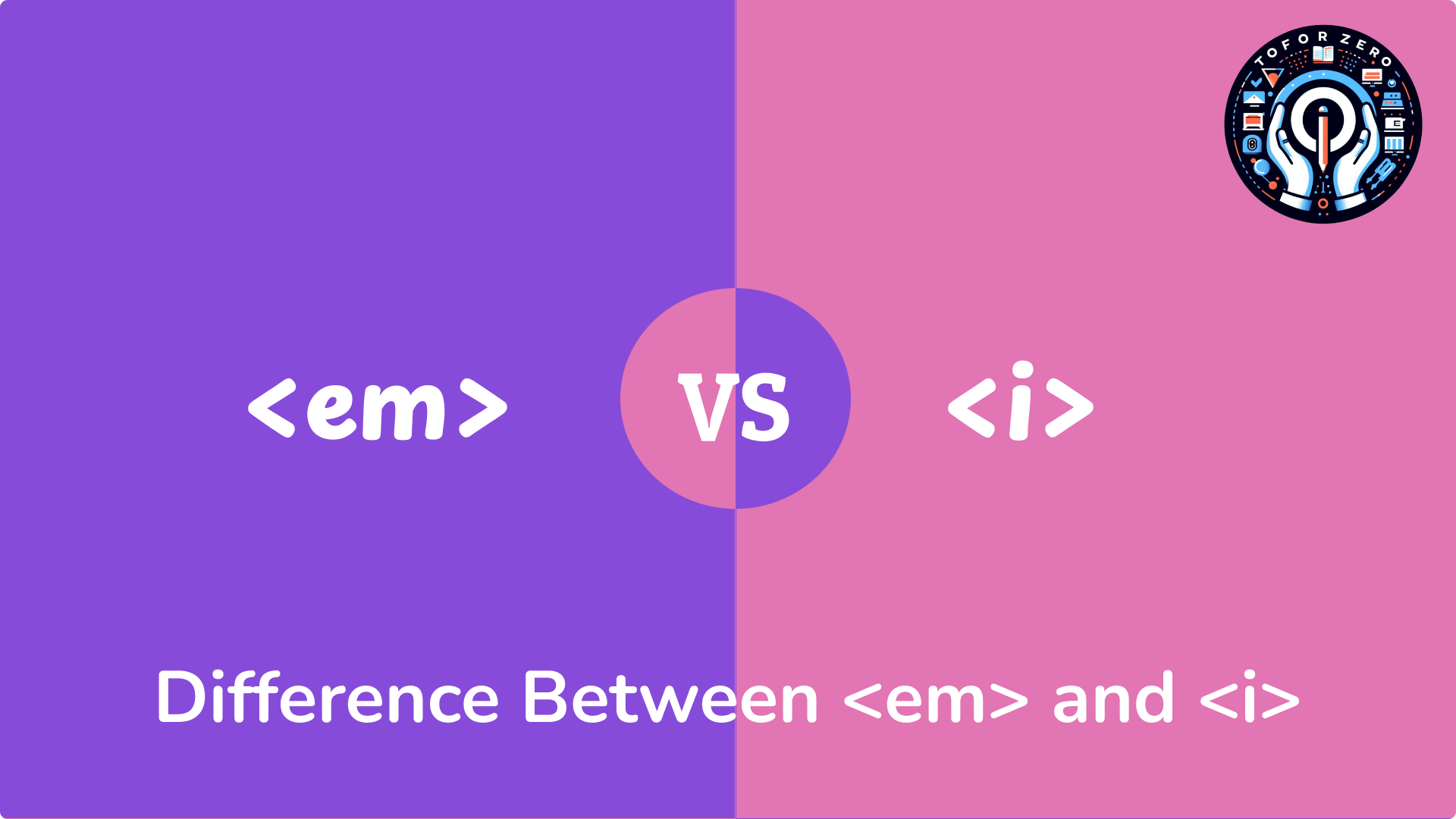Back to blog


September 06, 2024


Gautam Patoliya, Deep Poradiya
Tutor HeadDifference Between <em> and <i>🆚

Overview📚:
- In HTML, <em> and <i> are both used to style text, but they serve different purposes and convey different meanings. Understanding these differences helps create semantic and accessible web content.
The <em> Element🔠
- Purpose: The <em> tag is used to emphasize text. When text is wrapped in <em>, it signifies that the content is of greater importance or should be stressed.
- Semantic Meaning: <em> is a semantic element. It conveys meaning beyond just appearance. It indicates that the enclosed text should be emphasized, which can be important for accessibility tools like screen readers.
- Default Styling: By default, browsers typically render <em> text in italics. However, the primary role of <em> is semantic rather than purely stylistic.
- Example:
<p>I really <em>love</em> coding.</p>
- In this example, the word "love" is emphasized, indicating that it’s an important part of the sentence.
- Accessibility: Screen readers often interpret <em> text with a change in tone or stress, making it clearer to visually impaired users that the text is emphasized.
The <i> Element📝
- Purpose: The <i> tag is used to apply italic styling to text without implying any special meaning or emphasis. It’s more about visual appearance than semantic meaning.
- Semantic Meaning: <i> is a non-semantic element. It does not convey any additional meaning to the text it encloses, other than its visual styling.
- Default Styling: Text within an <i> tag is typically displayed in italics. It is used purely for stylistic purposes.
- Example:
<p>Hello This is <i> ToForZero </i>.</p>
- Here, "ToForZero" is displayed in italics, but there is no additional emphasis or meaning conveyed.
- Accessibility: Since <i> is non-semantic, screen readers do not provide special emphasis or additional information about the text styled with <i>.
HTML